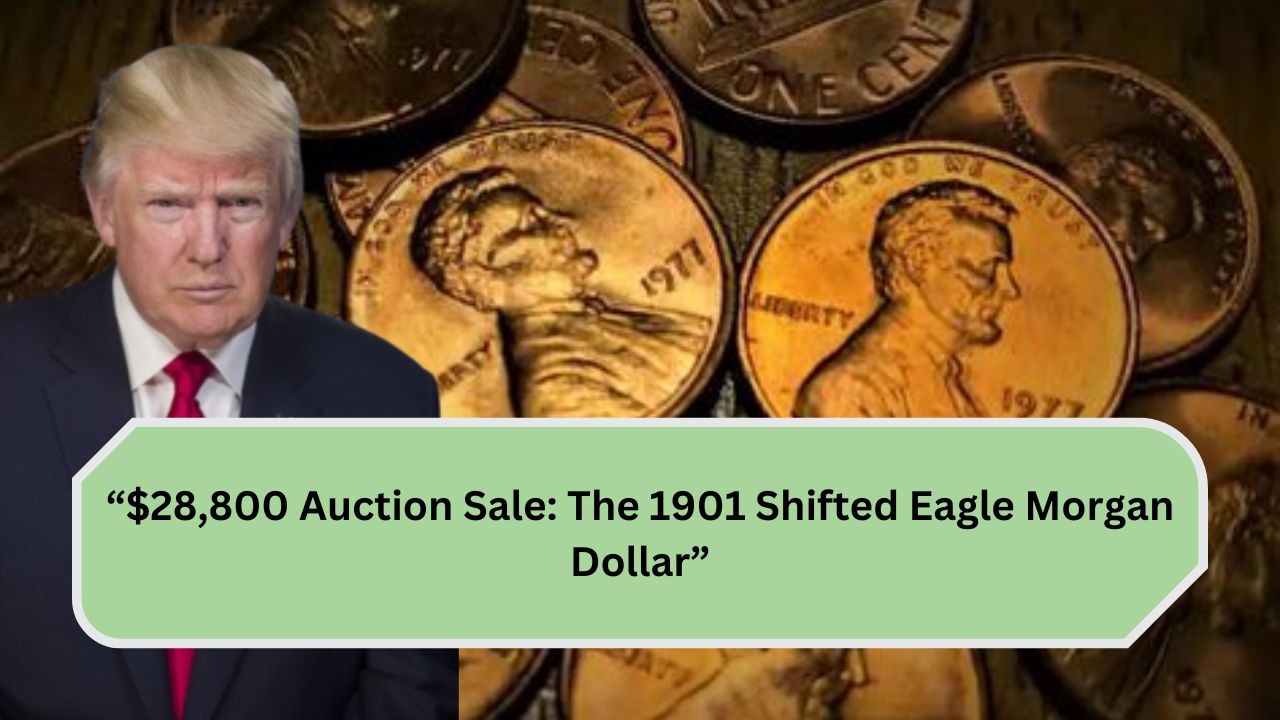The 1901 Morgan Dollar, specifically the Doubled Die Reverse (VAM-3 “Shifted Eagle”), is a prized variety in numismatics. Renowned for its rarity and fascinating design, it holds a special listing in the Red Book. Collectors cherish its reverse doubling details, especially on the eagle’s tail feathers, wings, arrows, and olive branch. Coins like this captivate enthusiasts and command impressive prices at auctions, showcasing their significance in the world of collectibles.
The Morgan Dollar: A Historical Icon
The Morgan Dollar is one of the most recognizable coins in U.S. history, minted from 1878 to 1904 and again in 1921. Named after its designer, George T. Morgan, it symbolizes America’s economic strength during its minting period. The 1901 Morgan Dollar, however, stands out due to its low mintage and special varieties.
| Feature | Description |
|---|---|
| Coin Type | 1901 Morgan Dollar |
| Variety | VAM-3 “Shifted Eagle” |
| Reverse Doubling | Visible on the eagle’s tail feathers, wing feathers, arrows, and olive branch |
| Grade | MS-60 (PCGS), highest grade MS-62+ |
| Auction Sale Price | $28,800 (Stack’s Bowers Rarities Night) |
| Key Identification Points | Doubling on tail feathers, wings, arrows, and olive branch |
| Rarity | Extremely rare, especially in Mint State |
| Minting Year | 1901 |
| Design | George T. Morgan’s classic eagle and Lady Liberty |
| Surface Appearance | Lustrous satin to softly frosted with a brilliant silver-white tone |
What Makes the 1901 Morgan Dollar Unique?
The 1901 Morgan Dollar is notable for its limited availability, especially in Mint State grades. While many Morgan Dollars were heavily circulated, the 1901 version saw reduced production and fewer surviving specimens in pristine condition.
The Doubled Die Reverse: A Collector’s Gem
The Doubled Die Reverse of the 1901 Morgan Dollar is a variety that excites collectors due to its distinct features.
Key Features of the Doubled Die Reverse (VAM-3)
- Eagle’s Tail Feathers and Wing Feathers: These areas showcase clear doubling, a hallmark of the variety.
- Arrows and Olive Branch: Additional doubling is visible here, adding to its visual appeal.
- Shifted Eagle Design: This characteristic enhances its desirability, as it deviates from the standard design.
Rarity and Value
Coins like the VAM-3 “Shifted Eagle” are scarce, particularly in Mint State. For example, an MS-60 grade 1901 VAM-3 Morgan Dollar sold for $28,800 at Stack’s Bowers Rarities Night auction.
The Auction Highlight: Stack’s Bowers Rarities Night
The MS-60 1901 VAM-3 Morgan Dollar
The auction featured an MS-60 graded 1901 VAM-3 Morgan Dollar by PCGS. It was the only example in this grade, with just six higher-graded examples, the finest being MS-62+.
Features Highlighted by Experts
- Surface Appeal: Described as “lustrous satin to softly frosted surfaces.”
- Coloration: The silver-white appearance captivated Morgan Dollar enthusiasts.
This remarkable coin fetched $28,800, reflecting its rarity and appeal.
Collecting the 1901 Morgan Dollar
Why It’s a Coveted Addition
Owning a 1901 Mint State Morgan Dollar, especially the VAM-3 variety, is a dream for many collectors. Its scarcity, combined with its fascinating design details, makes it a standout piece.
How to Identify the Doubled Die Reverse
Collectors should carefully examine the eagle’s tail feathers and wings, as well as the arrows and olive branch, for signs of doubling.
Resources for Morgan Dollar Enthusiasts
Connecting with Fellow Collectors
- Coin World’s Newsletter: Stay updated on numismatic news.
- Social Media: Platforms like MyCollect provide opportunities to engage with other collectors.
- Dealer Directory: Access a network of reliable coin dealers.
Subscription Options
Coin enthusiasts can choose from digital, print, or combination subscriptions to deepen their knowledge and stay informed.
Conclusion
The 1901 Morgan Dollar, particularly the Doubled Die Reverse (VAM-3), remains a crown jewel for collectors. Its rarity, unique features, and impressive auction prices highlight its importance in numismatics. Whether you’re a seasoned collector or just starting, this coin’s story and value are undeniable. Delve into the fascinating world of Morgan Dollars and uncover the history and artistry behind each piece.
FAQs
What is a “Doubled Die Reverse” in a Morgan Dollar?
A Doubled Die Reverse refers to a variety of the Morgan Dollar where certain features on the reverse (back) of the coin show noticeable doubling due to a misalignment during the minting process. In the case of the 1901 VAM-3, this doubling is visible on the eagle’s tail feathers, wing feathers, arrows, and olive branch.
Why is the 1901 Morgan Dollar so valuable?
The 1901 Morgan Dollar is valuable due to its limited production and the fact that many of these coins were circulated heavily, leaving fewer in Mint State. The VAM-3 “Shifted Eagle” variety is particularly rare, making it even more sought after by collectors. The unique doubling on the reverse makes this variety highly desirable.
How can I tell if I have a 1901 VAM-3 Morgan Dollar?
Look for doubling on the eagle’s tail feathers, wing feathers, arrows, and olive branch on the reverse side of the coin. These doubled features are the key identifiers of the VAM-3 variety. If you believe you have one, getting it graded by a reputable service like PCGS can help confirm its authenticity.
What is the significance of the MS-60 grade for the 1901 VAM-3?
An MS-60 grade on a 1901 VAM-3 Morgan Dollar indicates that the coin is in “Mint State” condition but has some visible imperfections, such as marks or scratches. While it may not be the highest possible grade, an MS-60 example of this coin is still highly sought after due to its rarity and the unique doubling features.
What auction price did the 1901 VAM-3 Morgan Dollar sell for?
The 1901 Morgan Dollar is special not only because of its relatively low mintage but also because of the unique “doubled die reverse” that shows distinct doubling on the reverse side. This makes it an important coin in the Morgan Dollar series, particularly among collectors focused on rare varieties.

